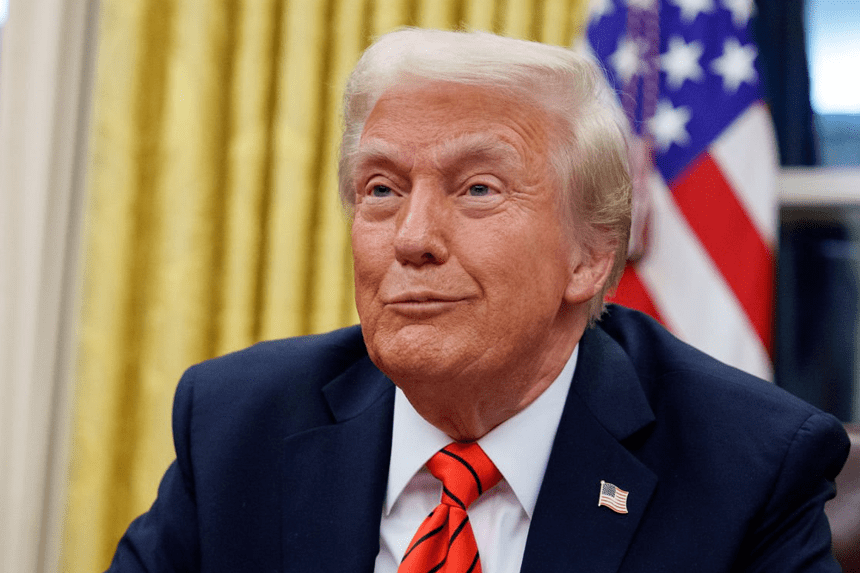The appeals court has lately given temporary permission for former President Donald Trump’s divisive tariffs to be applied. At first, the purpose of these taxes was to address national security by singling out steel, aluminum, and imports from China. For now, the court has kept them operating while it studies their legality, even though the administration claimed they were beyond its executive powers. It might influence the way the United States trades with other countries, cost people and businesses more, and cause more talk about presidential authority and favoring one’s economy.
- What Was the Tariff Decision Made by the Appeals Court?
- Which Tariffs Are Under Discussion?
- Why Did the Tariffs Face Legal Challenges?
- What Is the Temporary Ruling of the Court Significant?
- What Is the Reaction of Tariff Supporters?
- What Reactions Do Critics Have to the Court’s Decision?
- What Political Consequences Does the Decision Have?
- Could U.S.-China Relations Be Affected by the Decision?
- What Does This Signify for American Consumers and Businesses?
- Does This Situation Have Historical Parallels?
- Would Congress Take Action to Solve the Problem?
- Conclusion: What does the ruling mean for U.S. trade going forward?
What Was the Tariff Decision Made by the Appeals Court?
As of now, the tariffs created by Donald Trump during his presidency can be kept in place, a federal appeals court has decided. The ruling came following many legal challenges aimed at changing earlier administration actions on the economy. Because the court made its decision, the tariffs that once harmed the flow of international trade are now once again significant.
Anyone who argues that tariffs are needed to protect the domestic industry sees the decision as a big victory. Yet, the debate has restarted over whether these laws are worse for society than they are helpful.
Which Tariffs Are Under Discussion?
The tariffs mainly go after steel, aluminum, and other manufactured goods that are imported from important trade partners like China. Throughout Trump’s presidency, these were part of a campaign he called the “America First” trade strategy. The purpose was to enhance American manufacturing, manage imbalances in trade, and reduce the nation’s trust in products from abroad.
Nonetheless, people who opposed the tariffs thought they raised costs for American companies and consumers, damaged America’s relations with other nations, and led to other governments reacting.
Why Did the Tariffs Face Legal Challenges?
On procedural and constitutional grounds, several trade associations and corporate alliances contested the tariffs. Their dispute? That by circumventing congressional scrutiny and utilizing national security as a rationale for economic measures, the previous president went beyond his authority under trade rules.
The authority of the executive branch to impose tariffs indefinitely without reexamination or legislative permission was called into question by these legal challenges. The plaintiffs hoped that the policy would be completely overturned by the courts. Rather, they received a brief—and now brief—pause.
What Is the Temporary Ruling of the Court Significant?
Regarding the validity of the tariffs, the court did not render a final decision. Instead, it issued a stay, which means that the tariffs will continue to be in effect until a more thorough legal assessment is conducted. This temporary ruling has immediate effects: U.S. industries that depend on those tariffs will maintain their current safeguards, and products that are now subject to additional import levies will continue to do so.
Businesses that import the impacted goods will currently have to pay for them or pass the cost along to customers. The decision also suggests that it won’t be as easy as some politicians had anticipated to reverse such trade rules.
What Is the Reaction of Tariff Supporters?
The tariffs’ supporters are applauding the court’s ruling. Many saw it as support for Trump’s trade policies, contending that the US should keep protecting its sectors from unfair international competition. They stress that some nations, especially China, have long profited from trade policies that undermine domestic industry and destroy American jobs.
Advocates further contend that the court’s decision avoids undue reliance on unstable international supply networks and strengthens American sovereignty over its economic policies.
What Reactions Do Critics Have to the Court’s Decision?
Critics, on the other hand, are quite worried. Multinational corporations and economic specialists claim that the tariffs have done more harm than good. They cite retaliatory tariffs from trading partners, manufacturing delays, and rising raw material costs as reasons why U.S. exporters have suffered.
According to them, the court’s decision keeps the market unclear. Many worry that if legal disputes continue for months or even years, this temporary halt could result in long-term commercial difficulties.
What Political Consequences Does the Decision Have?
The court’s ruling comes at a delicate political time. The present government has been attempting to strike a delicate balance between not coming seen as weak on trade policy and tearing down some of Trump’s economic legacy. At least for the time being, the court decision might limit how forcefully current politicians can reverse the tariffs.
It also feeds the partisan arguments that are still going on. While progressive politicians caution about unbridled presidential power over global trade, some conservative lawmakers are using the verdict to support more executive powers in trade.
Could U.S.-China Relations Be Affected by the Decision?
Of course. Since the beginning, the tariffs have been a significant source of contention in U.S.-China ties. Diplomatic efforts between the two countries are bound to be impacted by any court ruling that alters these trade practices.
In the event that the tariffs are maintained over time, China might react by strengthening its defenses or fortifying ties with other international trading partners. Trade renegotiations may become possible if they are overturned. For the time being, the ambiguity might prevent any meaningful advancement in bilateral negotiations.
What Does This Signify for American Consumers and Businesses?
This decision probably means ongoing financial hardship for US businesses that depend on imported commodities or raw materials. Higher production costs may cause shops and manufacturers to cut staff or hike prices in order to remain profitable.
As a result, consumers may see price rises for a range of products, including construction materials, cars, and appliances. While there may be short-term benefits for certain industries, such as mining and steel manufacturing, overall market volatility may rise. Read another article on Amazon: Trump Import Tariffs Dispute
What Will Happen Next in the Court Case?
This isn’t the end of the story because the ruling is only temporary. The bigger question still needs to be decided by the courts: Does current trade law justify the tariffs imposed by Trump? Depending on how the legal procedure plays out, that decision might be made in a matter of months or even years.
It is anticipated that both parties will keep up their lobbying efforts, mobilize public support, and get ready for future appeals. Both market projections and policy circles are likely to remain unpredictable in the interim.
Does This Situation Have Historical Parallels?
Indeed, the United States has a long history of using tariffs as a political and economic tool, going all the way back to the 1930s Smoot-Hawley Tariff Act, which many historians contend made the Great Depression worse. Tariffs have recently been employed as negotiation tools in trade conflicts by previous administrations, but frequently with more focused or time-limited tactics.
The scale of the Trump-era tariffs and the national security rationale behind their implementation are what set them apart; if unchecked, opponents contend, this may create a dangerous precedent.
Would Congress Take Action to Solve the Problem?
Congress is under increasing pressure to reinterpret and perhaps limit the president’s authority over tariffs. In recent years, a number of bipartisan proposals have been filed with the goal of increasing scrutiny of executive branch trade policy decisions.
But it’s still unclear if Congress will take any action. Lawmakers might be reluctant to take decisive action on such a contentious issue, especially one that is so strongly linked to the previous president, as an election year draws near.
Conclusion: What does the ruling mean for U.S. trade going forward?
Keeping the Trump-era tariffs in place, at a minimum for now, is a challenge for U.S. trade policy. It makes clear the major political and economic arguments in international trade and points out the unclear boundaries of executive laws.
Until the case is resolved, American companies, customers, and policymakers need to adapt to an unpredictable situation. No matter what the final ruling is, the moment highlights a big question about who directs America’s role in the broader world economy, and at what expense it happens.








